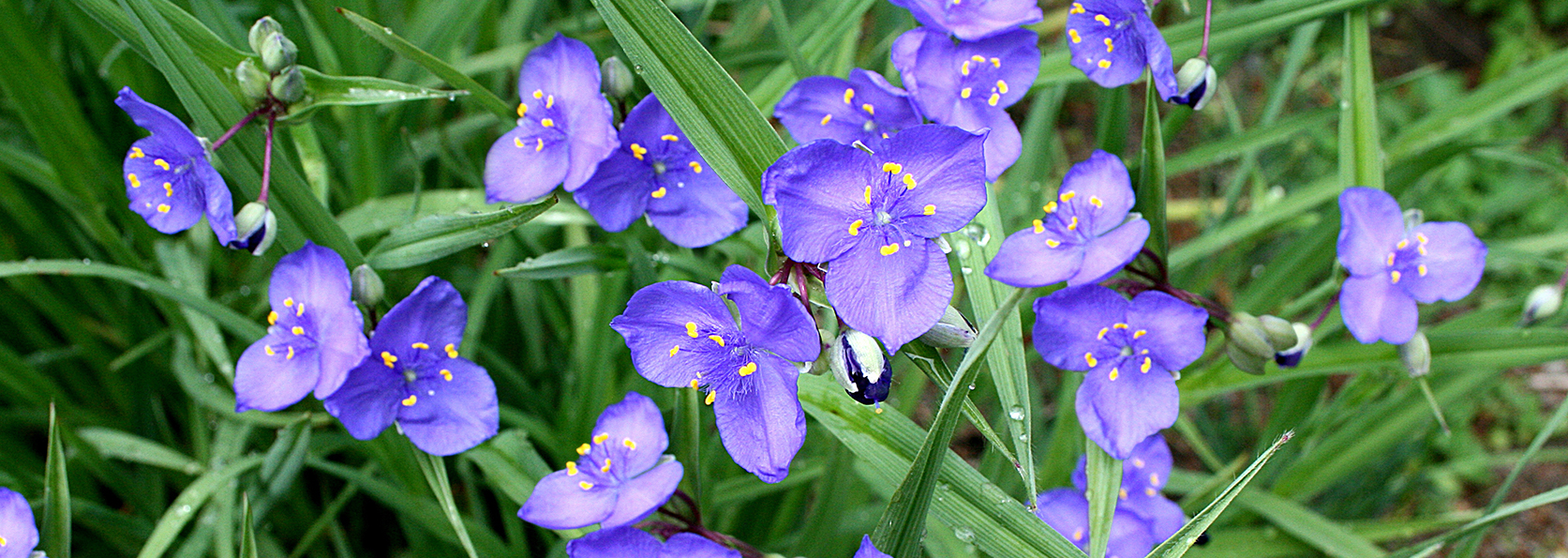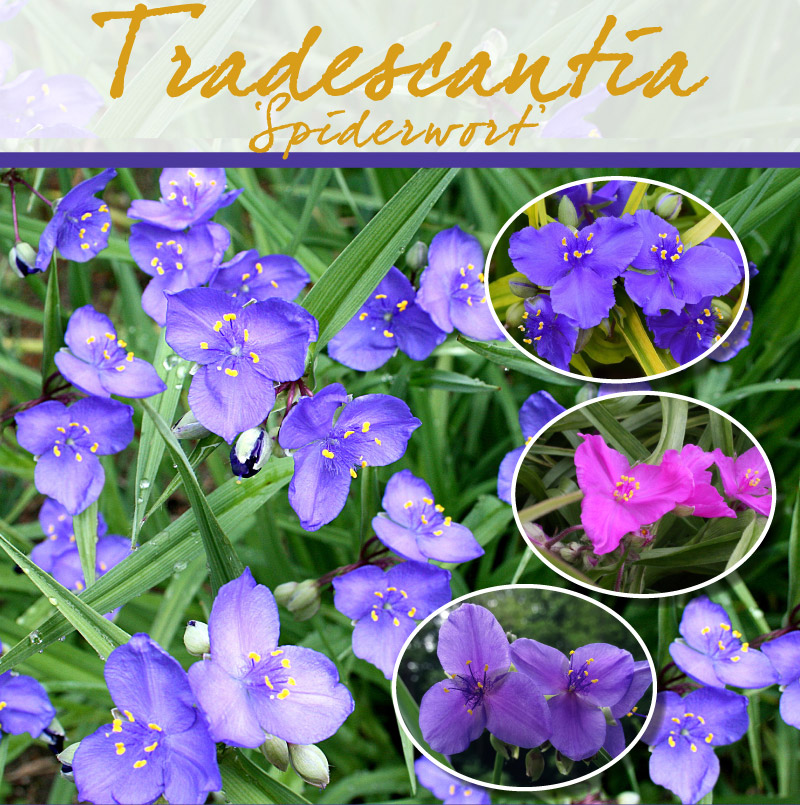I May Cure Your Arachnophobia

Perennial of the Week: Tradescantia/Spiderwort
Hardy, perennial forms of Tradescantia are commonly known as Spiderwort. Some people say this common name was derived from the plant’s sap, which looks like a strand of a spider web. Still others say the plant and its flower have spider-like qualities. Have no fear: Even beginning gardeners enjoy success with this attractive, easy-care plant.
Gardeners love Spiderwort for its long, grass-like foliage that range in color from chartreuse to dark green and blue-green. Each plant produces small flowers with three pointed petals and multiple stamens. Plants produce a profusion of buds and blooms, so you can count on Spiderwort to work its magic for months at a time.
Rohsler’s Grown varieties of Spiderwort that are now available include Sweet Kate, a chartreuse to gold plant with bright violet/pink blossoms; Red Cloud, an electric purplish pink cultivar with dark green foliage; Ohiensis, also known as Bluejacket or Ohio Spiderwort, which features blue-green leaves and deep blueflowers; Mrs. Loewer, a blue-green plant with light blue flowers; Zwanenburg Blue, which produces deep violet blooms; and Amethyst Kiss, which features periwinkle flowers.
Grow your Spiderwort in full sun to partial shade. These drought-tolerant plants are stunning when planted in groupings and add knockout color and texture to borders and meadows.
If deadheading (removing spent blooms) is not your idea of a meditative experience, you’ll love Spiderwort for its ability to self-clean.
Spiderwort is native from southern Canada to northern Argentina. In years gone by, Native Americans used the plants for food and medicine. These days, Spiderwort is mainly a food source for pollinators like bees and butterflies.
The Latin name of this group of plants was coined by Linnaeus, who wanted to honor John Tradescant and his son of the same name. The elder Tradescant was a royal gardener in England. During his lifetime (the 1570s to 1638), he traveled the world, and brought exotic plants back to England. The younger Tradescant (1608 to 1662) traveled to Virginia three times and is credited with introducing America’s Tulip Tree to Europe.
Rohsler’s is currently growing the varieties mentioned above which are just coming into bloom. Look for the Rohsler’s Grown branded Terra Cotta colored containers show casing all of the beautiful and easy to care for Spiderworts mentioned above.
Visit us today and check out the many varieties of Rohsler’s Grown Spiderwort we have ready for your garden. Then get planting! We’ll see you soon and look forward to assisting you with your garden and landscape needs and advice.

